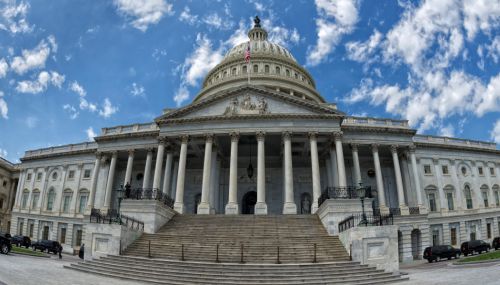All
The Clean Power Plan: Repeal or Replace?
by Ed Burke, Dennis K. Burke Inc.

In late March, the president signed an executive order to roll back the Clean Power Plan, with a goal of taking restraints off businesses and boosting the coal industry. Targeting climate change regulations, saying they hinder U.S. energy production and jobs, the order directs the EPA to review the regulation to decide whether to “suspend, rescind, or revise it.” The agency will still need to go through the formal rulemaking process to change the existing rule.
The Clean Power Plan would require states to slash carbon dioxide emissions from power plants by 32 percent of 2005 levels over 25 years. The plan was never implemented, because it was challenged by 27 states in the U.S. Court of Appeals for the D.C. Circuit. Then in 2016, the Supreme Court ordered the EPA to halt enforcement of the plan until the lower court rules in the lawsuit against the plan.
Now, EPA has filed a legal motion asking the U.S. Court of Appeals for the D.C. Circuit to delay ongoing court proceedings on the regulation to allow for the reviews.
States Challenge EPA
A coalition of 17 states is objecting to the EPA’s request to delay legal proceeding of the climate rule. The New York-led coalition’s motion asked the court to throw out EPA’s request to delay court proceedings, saying the delay “would waste the substantial resources already expended in this litigation.”
The appeals court heard oral arguments in the case over six months ago and should be ready to rule at any time. A quick ruling could put the regulations on the docket of the Supreme Court.
The coalition said that a prolonged delay would “concretely harm” people living in their states, many of whom have sought for more than a decade to compel EPA to regulate carbon dioxide.
It’s worth noting that back in 2007, the Supreme Court ruled in the case Massachusetts v. Environmental Protection Agency that EPA regulation of carbon dioxide is actually required by the Clean Air Act, which is still in effect.
Utilities Looking Ahead
The 2017 State of the Electric Utility Survey shows a sector reshaping itself for a cleaner, more distributed future – no matter what happens with the Clean Power Plan, according to Utility Dive.
The annual survey, conducted by Utility Dive and research firm PA Consulting, asked 600 utility executives from around the country to answer a series of questions about how their utility is run and how it is preparing for the future.
Notably, only four percent of the survey respondents said that they expected to increase coal power in their energy mix. Most responded that coal power would decrease or remain the same (18 percent) over the next 10 years. Twenty-seven percent of the respondents expect coal power to decrease moderately in their energy mix, while 52 percent expected coal power to decrease significantly.
Only four percent of utility executives expected their utility to increase oil in their energy mix, while 54 percent expect oil to decrease moderately or significantly. The rest (42 percent) expected oil to stay the same in their energy mix over the next 10 years.
Sixty-four percent of survey respondents expected natural gas to increase moderately or significantly in their energy mix, while 11 percent expected natural gas to decrease.
Seventy-eight percent of respondents expected their utility to increase grid-scale energy storage moderately or significantly in their utility mix. Only four percent expected their grid-scale energy storage to decrease.
Seventy-nine percent of utility executives also expect their distributed energy storage to increase moderately or significantly, while only three percent expected their distributed energy storage to decrease.
In 2016, solar was the leading source of new capacity on the grid. Utility executives actually expected to see utility-grade and distributed solar increase in their energy mix most consistently. Eighty-two percent thought utility-scale solar would increase, with only three percent answering that solar would decrease in their energy mix over the next 10 years. Eighty-three percent also said distributed generation (rooftop solar) would increase.
Bleak Outlook For Coal
The reality is that the coal industry has been on a steep and steady decline over the past thirty years. “Dramatic policy changes would be needed for coal to overcome the realities of economics,” according to a recent report from the Institute for Energy Economics and Financial Analysis (IEEFA). The report suggests that the main threat to coal isn’t excessive regulation, it’s that “too many companies are still mining too much coal for too few customers.”
So, What’s Next?
Well, the war on coal is over, but it’s pretty clear that not much will change in the U.S. for the declining coal industry.
Utilities plan to source more renewables, distributed resources and natural gas in coming years. Solar, wind, and energy storage are getting more affordable and will continue to grow, while creating more U.S. energy jobs.
In the end, it’s the court decisions as to “whether EPA is required to regulate carbon dioxide” that will determine the Clean Power Plan’s fate and future energy policy.
Related Posts
 National Energy Choice Legislation Advances Through Committee
National Energy Choice Legislation Advances Through Committee
Posted on November 20, 2025
 New and Improved: NEFI Member Benefits Deliver More Value
New and Improved: NEFI Member Benefits Deliver More Value
Posted on October 17, 2025
 It’s Upgrade Season. Get the Sale.
It’s Upgrade Season. Get the Sale.
Posted on October 16, 2025
 The Value of Providing Value
The Value of Providing Value
Posted on October 16, 2025
Enter your email to receive important news and article updates.
